m6A/IGF2BP3-driven serine biosynthesis fuels AML stemness and metabolic vulnerability
- PMID: 40328743
- PMCID: PMC12056023
- DOI: 10.1038/s41467-025-58966-1
m6A/IGF2BP3-driven serine biosynthesis fuels AML stemness and metabolic vulnerability
Abstract
Metabolic reprogramming of amino acids represents a vulnerability in cancer cells, yet the mechanisms underlying serine metabolism in acute myeloid leukemia (AML) and leukemia stem/initiating cells (LSCs/LICs) remain unclear. Here, we identify RNA N6-methyladenosine (m6A) modification as a key regulator of serine biosynthesis in AML. Using a CRISPR/Cas9 screen, we find that depletion of m6A regulators IGF2BP3 or METTL14 sensitizes AML cells to serine and glycine (SG) deprivation. IGF2BP3 recognizies m6A on mRNAs of key serine synthesis pathway (SSP) genes (e.g., ATF4, PHGDH, PSAT1), stabilizing these transcripts and sustaining serine production to meet the high metabolic demand of AML cells and LSCs/LICs. IGF2BP3 silencing combined with dietary SG restriction potently inhibits AML in vitro and in vivo, while its deletion spares normal hematopoiesis. Our findings reveal the critical role of m6A modification in the serine metabolic vulnerability of AML and highlight the IGF2BP3/m6A/SSP axis as a promising therapeutic target.
© 2025. The Author(s).
Conflict of interest statement
Competing interests: The authors declare no competing interests.
Figures
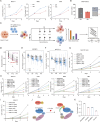
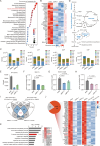
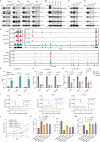
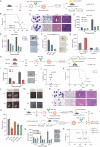
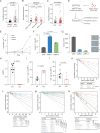
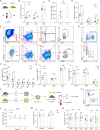
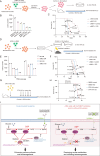
References
-
- Dohner, H., Weisdorf, D. J. & Bloomfield, C. D. Acute myeloid leukemia. N. Engl. J. Med. 373, 1136–1152 (2015) - PubMed
-
- Shlush, L. I. et al. Tracing the origins of relapse in acute myeloid leukaemia to stem cells. Nature547, 104–108 (2017). - PubMed
-
- Hou, S., Liu, J. & Zhu, Y. Multi-omics advances for molecular characterization, precision medicine, and prognostic implications in leukemia. Cell Investig.1, 100007 (2025).
MeSH terms
Substances
Grants and funding
LinkOut - more resources
Full Text Sources
Medical
Molecular Biology Databases
Research Materials
Miscellaneous

